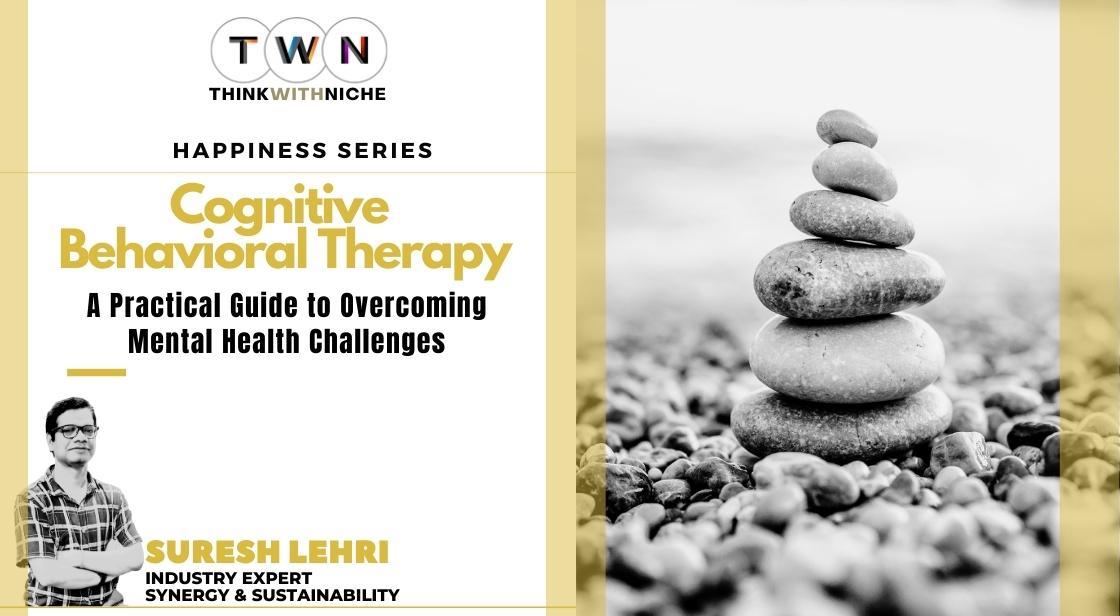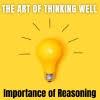Cognitive Behavioral Therapy: A Practical Guide to Overcoming Mental Health Challenges

Blog Post
Everyone faces moments of stress, anxiety, and sadness, but for some, these instances become so frequent and overwhelming that they interfere with daily life, transforming into mental health problems.
If you too are seeking a way to cope with such issues, or simply wish to understand them better, you've come to the right place.
In this insightful article, we delve into the realm of Cognitive Behavioral Therapy (CBT), a popular and effective psychological treatment method that can be an answer to many mental health problems.
CBT is a research-backed approach that helps individuals identify and change dysfunctional thought patterns, emotions, and behaviors.
By focusing on solutions and encouraging a more positive outlook, it can greatly improve one's mental wellbeing.
But how you may wonder, can you effectively apply this technique in everyday life? This is precisely what we explore in this detailed, informative guide.
From practical tips to helpful techniques, we cover all aspects of CBT.
Whether you're a beginner or someone who's been trying to master CBT for some time, this article promises to enrich your understanding and enhance your skills.
So, let's embark on this journey towards better mental health together.
Living with mental health challenges can be a daunting experience. But did you know that Cognitive Behavioral Therapy (CBT) offers effective solutions to manage and overcome these hurdles?
In this extensive guide, we will delve deep into the realm of CBT, exploring practical tips and techniques that can help you navigate the tumultuous waters of mental health.
By understanding how CBT works, adopting its proven strategies, and applying them in your life, you can significantly enhance your well-being and achieve positive outcomes.
CBT, a form of psychotherapy, was developed to treat various mental health disorders. It focuses on identifying, understanding, and changing thinking and behavior patterns.
This therapy emphasizes the crucial role that thoughts and actions play in how we feel. In essence, our thoughts about a situation influence our actions, and in turn, our feelings.
Consequently, if we can change our thoughts, we can change our feelings and behaviors.
If you change the way you think, you can change the way you feel.
But how exactly can we change our thoughts? That's where practical tips and techniques come into play. This guide will provide you with an array of tools to help you utilize the power of CBT effectively. We will cover topics like:
- Identifying and challenging negative thoughts
- Developing problem-solving skills
- Learning relaxation techniques
- Improving communication skills
- How does CBT work?
- Boosting self-esteem and self-confidence
Our aim is to help you understand and apply these techniques, empowering you to take control of your mental health.
The journey towards mental well-being may seem lengthy and arduous, but with the right tools and guidance, you can make it a rewarding and transformative experience.
So, let's dive in and explore how CBT can help you manage, overcome, and thrive amidst mental health challenges.
Understanding Cognitive Behavioral Therapy
Unraveling the complexities of Cognitive Behavioral Therapy (CBT) is the first crucial step towards leveraging its full potential. CBT is a type of talk therapy that has been established as a highly effective tool for treating a variety of mental health issues.
By targeting negative thought patterns and maladaptive behaviors, this therapeutic approach aims to mitigate emotional distress and enhance overall well-being.
At its core, CBT operates on the understanding that our thoughts significantly influence our emotions and behaviors. If our cognitive processes are clouded by negativity or unrealistic expectations, they can trigger destructive emotions and actions.
CBT's primary goal is to help individuals recognize and rectify these harmful thought patterns.
CBT is a structured, goal-oriented therapy typically conducted over a defined period. It involves working closely with a therapist who helps you understand your problems and develop coping strategies.
The effectiveness of this therapy isn't just anecdotal; numerous scientific studies have supported its efficacy in treating various mental health issues, ranging from depression and anxiety to eating disorders and post-traumatic stress disorder (PTSD).
How does CBT work?
A type of psychotherapy that helps people challenge and change detrimental thought patterns, behaviors, and emotional responses. The therapy is based on the understanding that our thoughts, feelings, and actions are profoundly interconnected, and altering one aspect can positively impact the others. Now, let's delve deeper into how CBT operates.
Recognizing Negative Thoughts and Behaviors
The first step in CBT involves identifying harmful or unhelpful thoughts and behavioral patterns. These negative cognition could be related to your self-image, how you interpret situations, or how you foresee the future. It's essential to recognize that these thoughts are often automatic, popping up without conscious control, which makes them challenging to manage. However, with CBT, you can learn to catch these thoughts before they escalate and disrupt your mental well-being.
Challenging Negative Thought Patterns
Once you've identified your negative thoughts and behaviors, the next step is to challenge them. This process involves examining the validity of these thoughts. Are they factual, or are they merely products of anxiety, fear, or low self-esteem? By questioning the accuracy of these thoughts, you can begin to see them for what they really are: cognitive distortions, not realities.
Replacing Negative Thoughts with Positive Ones
The final stage in CBT involves replacing the negative thoughts you've identified and challenged with positive, healthy ones. This process isn't about fostering unrealistic positivity; instead, it's about cultivating a more and balanced realistic perspective of yourself, others, and the world around you. Through CBT, you can develop adaptive strategies and coping mechanisms to manage your thoughts and behaviors effectively, leading to improved mental health and overall well-being.
Key Components of CBT
Let's delve into the vital elements that constitute Cognitive Behavioral Therapy:
Cognitive Techniques: These are strategies to identify and challenge negative thoughts, often replacing them with more rational, positive alternatives.
Behavioral Techniques: These involve learning and implementing healthier behaviors, often through exposure therapy or behavioral activation.
Skill Training: This component focuses on teaching essential coping skills like problem-solving, stress management, and effective communication.
Keep in mind that CBT isn't a one-size-fits-all solution. Therapists often tailor the therapy to the individual's needs, making it a versatile tool for addressing a wide array of mental health problems.
Remember, changing deeply ingrained thought patterns and behaviors takes time and patience. Don't rush the process. The journey may be challenging, but the outcomes – improved mental health and a better quality of life – are worth it.
Now that we have a basic understanding of what CBT is, let's move on to some practical tips and techniques for leveraging this form of therapy to address your mental health challenges.
CBT and Dialectical Behavior Therapy: Bridging the Gap in Psychotherapy
Dialectical Behavior Therapy, commonly known as DBT, is a specialized form of psychotherapy that has its roots in Cognitive Behavioral Therapy (CBT). This therapeutic approach is uniquely tailored to individuals who grapple with intense and overwhelming emotions. In essence, DBT is a type of talk therapy designed to empower individuals in managing their emotions, thoughts, and behaviors effectively.
Let's delve deeper into the core principles and origins of Dialectical Behavior Therapy:
1. The Foundation in Cognitive Behavioral Therapy (CBT):
At the heart of DBT lies its connection to Cognitive Behavioral Therapy (CBT). CBT is a widely recognized form of talk therapy that explores the intricate relationship between our thoughts, emotions, and actions. By understanding how our thoughts can significantly impact our feelings and behaviors, individuals can gain valuable insights into their psychological well-being.
2. The "Dialectical" Approach:
The term "dialectical" within DBT signifies the art of blending opposing concepts or ideas. This dialectical approach is pivotal in DBT as it centers on a dualistic perspective. On one hand, DBT encourages individuals to acknowledge and accept the reality of their lives, including their emotions and behaviors. On the other hand, it propels them toward positive change by equipping them with the tools needed to address and modify unhelpful behaviors.
3. The Visionary Behind DBT:
DBT emerged in the 1970s, thanks to the pioneering work of Marsha Linehan, a distinguished American psychologist. Linehan's innovative approach aimed to provide an effective therapeutic framework for individuals who faced the immense challenge of regulating intense emotions.
Key Components of Dialectical Behavior Therapy:
Now, let's explore some fundamental components that make up the essence of DBT:
1. Emotion Regulation: One of the core elements of DBT is the cultivation of emotional regulation skills. Individuals undergoing DBT learn how to manage and navigate their intense emotions in a healthy and constructive manner.
2. Mindfulness: DBT places significant emphasis on mindfulness practices. By being fully present and attentive to their thoughts and feelings in the moment, individuals can gain greater self-awareness and control.
3. Interpersonal Effectiveness: DBT equips individuals with the tools to improve their interpersonal relationships. Effective communication, conflict resolution, and boundary setting are some of the skills emphasized in this aspect of therapy.
4. Distress Tolerance: In the face of emotional distress, DBT teaches individuals how to tolerate and cope with overwhelming feelings without resorting to harmful behaviors.
Solving Mental Health Problems with Cognitive Behavioral Therapy: Practical Tips and Techniques
Overcoming Anxiety and Panic Attacks with CBT Techniques
Living with anxiety and frequent panic attacks can be debilitating; however, CBT offers practical techniques to manage these conditions effectively. The process typically involves recognizing the triggers, understanding the body's response, and then learning to control the reactions.
Recognize the Triggers: Identifying what causes your anxiety or panic attacks is the first step in managing them. This may involve keeping a diary of your thoughts and emotions, noting down when you feel anxious, and identifying any patterns.
Physical Control: Panic attacks often cause physical symptoms like increased heart rate and hyperventilation. Learning relaxation techniques, deep breathing, and mindfulness can help you regain control during an attack.
Cognitive Control: A core component of CBT is challenging and changing negative thought patterns. By recognizing the unrealistic or exaggerated thoughts during a panic attack, you can begin to replace them with more rational thoughts.
Remember, the key to managing anxiety and panic attacks is practice. With time, these techniques will become more natural, and your response to anxiety-inducing situations will improve.
Applying CBT to Overcome Depression
Depression can feel like an insurmountable mountain; however, CBT provides tools and techniques to chip away at this mountain, turning it into manageable hills. Here's how you can apply CBT techniques to combat depression:
- Cognitive Reappraisal: This involves challenging the negative thought patterns that contribute to feelings of depression. By identifying these thoughts and actively working to replace them with more positive or realistic ones, you can mitigate the impact of depression on your emotions and behaviors.
- Behavioral Activation: Depression often leads to avoidance of activities that you once enjoyed. Through behavioral activation, you gradually reintroduce these activities into your life, thereby increasing positive experiences and reducing feelings of depression.
- Problem-Solving: Depression can make even the smallest problems seem overwhelming. Learning problem-solving skills can help you break down issues into manageable parts, reducing feelings of hopelessness and helplessness.
Implementing these techniques may be challenging initially, but with persistence and patience, you can significantly reduce your depression symptoms and improve your overall mood.
Remember, it's important to seek professional help if you're dealing with severe depression. CBT techniques are not a substitute for professional treatment, but they can supplement it and provide you with practical tools for coping.
Boosting self-esteem and self-confidence
Our aim is to help you understand and apply these techniques, empowering you to take control of your mental health. The journey towards mental well-being may seem lengthy and arduous, but with the right tools and guidance, you can make it a rewarding and transformative experience. So, let's dive in and explore how CBT can help you manage, overcome, and thrive amidst mental health challenges.
Mindfulness and Other CBT Techniques for Stress Management
Mindfulness, a core component of Cognitive Behavioral Therapy (CBT), is a powerful tool in managing stress and other mental health issues. Rooted in Buddhist meditation traditions but now widely recognized as a clinical practice, mindfulness involves paying attention to the present moment non-judgmentally. This can be an especially effective technique for those struggling with anxiety, depression, and stress disorders.
How does mindfulness work in CBT?
In the context of CBT, mindfulness is utilized to break the cycle of negative thinking often associated with mental health issues. By focusing on the present moment, individuals can learn to acknowledge their thoughts and feelings without judgment and resorting to automatic cognitive responses. This conscious awareness, cultivated over time, can lead to significant improvements in mental health and overall wellbeing.
But mindfulness isn't the only technique in the CBT toolbox for stress management. There exist several other strategies commonly used in conjunction with mindfulness to effectively tackle stress and its associated repercussions. Here is a closer look at such techniques:
Cognitive Reappraisal
Cognitive reappraisal involves changing the way you interpret an upsetting situation or event. By deliberately reframing your thoughts, you can alter your emotional response and reduce feelings of stress. This technique is particularly helpful in situations where you may feel powerless or lack control.
Progressive Muscle Relaxation (PMR)
Physical tension often accompanies mental stress. PMR involves sequentially tensing and relaxing different muscle groups, which can contribute to a decrease in physical symptoms of stress and promote a sense of relaxation.
Behavioral Activation
Behavioral activation is a technique used in CBT to guide individuals to engage in activities they find enjoyable and rewarding. This technique can help boost mood, reduce stress, and interrupt the cycle of avoidance behaviors often seen in those with depression and anxiety.
“Applying these techniques regularly can help individuals manage stress more effectively. It's important to remember that the effectiveness of CBT relies largely on the individual's willingness to engage and practice these techniques consistently.”
While these techniques can be self-implemented, working with a trained CBT therapist can greatly enhance their effectiveness. A therapist can provide valuable guidance and support as you learn to use these tools and techniques to manage stress and improve your overall mental health.
Ultimately, the goal of CBT is not to eliminate stress entirely but to equip individuals with the skills to manage it. By understanding and applying these CBT techniques, you can effectively reduce your stress levels and enhance your resilience in the face of life's challenges.
The Role of CBT in Managing Obsessive-Compulsive Disorder (OCD)
Obsessive-Compulsive Disorder, commonly known as OCD, is characterized by persistent, unwanted thoughts (obsessions) and repetitive behaviors (compulsions) that the person feels driven to perform. These obsessions can create a great deal of anxiety, and the compulsions are the individual's way of trying to reduce this distress. However, the relief is often temporary, and the cycle of obsessions and compulsions continues, significantly impacting daily life.
So, how can CBT help?
Like other mental health disorders, OCD can be effectively managed using CBT techniques.
Specifically, a type of CBT called Exposure and Response Prevention (ERP) is often used. Here's how it works:
- Exposure: The person is exposed to situations or thoughts that trigger obsessions. This exposure is done in a gradual, controlled manner under the guidance of a therapist.
- Response Prevention: The person is then encouraged to resist performing the compulsive behavior that usually follows the obsession. Over time, this leads to a reduction in the anxiety experienced due to the obsession.
This process may seem daunting, and indeed, it can be difficult. However, with the support of a trained therapist and the person's commitment to the therapeutic process, it can lead to significant improvements in managing OCD.
"Remember, recovery is not about being completely free from obsessions and compulsions. It's about being able to live a fulfilling life despite them."
By applying CBT techniques such as ERP, the person can gradually reduce the power that OCD has over their life, allowing them to regain control and experience improved mental well-being.
While this journey may be challenging, the end result—a life not dominated by obsessions and compulsions—can be incredibly rewarding. So, do not be discouraged. With the right tools, support, and a good dose of persistence, you can manage your OCD and enhance your quality of life.
CBT Strategies for Coping with Trauma and Post-Traumatic Stress Disorder (PTSD)
Post-Traumatic Stress Disorder or PTSD is a mental health condition that's triggered by a terrifying event - either experiencing it or witnessing it. Symptoms may include flashbacks, nightmares, severe anxiety, and uncontrollable thoughts about the event. CBT offers effective strategies for dealing with trauma and managing PTSD symptoms. Here's how:
Trauma-focused CBT: This is a specific type of CBT designed to help people who have experienced trauma. It involves gradually "exposing" you to thoughts, feelings, and situations that remind you of the trauma. Through this process, you can manage distressing feelings and reduce the hold these memories have on your life.
Cognitive Processing Therapy (CPT): This variant of CBT focuses on the way people perceive and cope with traumatic events. It helps you challenge and modify unhelpful beliefs related to the trauma, leading to a reduction in distressing symptoms.
Prolonged Exposure Therapy (PE): PE involves gradually confronting trauma-related memories and situations. This can help you reduce avoidance and fear, eventually gaining control over your reactions to the traumatic memories.
These techniques can be challenging, but with a trained therapist's guidance and your commitment to therapy, they can significantly alleviate PTSD symptoms and improve your quality of life.
"Recovering from trauma is a gradual and ongoing process. It doesn't mean forgetting the trauma but learning to have control over your memories and emotions associated with it."
By consistently applying these CBT techniques, you can manage your PTSD symptoms, reduce distress, and start to reclaim your life. While it might seem like a daunting journey, remember, with the right tools, guidance, and your determination, you can navigate toward a healthier mental state and improved quality of life.
Improving Communication and Relationship Skills through CBT Techniques
One of the most valuable aspects of Cognitive Behavioral Therapy (CBT) lies in its ability to enhance communication and relationship skills.
This form of therapy, with its focus on understandings and altering thought patterns, offers a practical roadmap for improving the quality of both our personal and professional interactions.
It is, therefore, a beneficial tool for anyone seeking to foster more meaningful connections.
The first step typically involves identifying the patterns or habits that are currently impeding effective communication. CBT encourages self-reflection, helping individuals to pinpoint the thoughts or beliefs that are sabotaging their relationships.
This could be anything from persistent negative thinking to an inability to express emotions effectively.
CBT is grounded in the understanding that our thoughts influence our feelings, which in turn impact our behavior.
By changing our thought patterns, we can improve our emotional responses and behavioral outcomes, thereby enhancing our communication skills and relationships.
Next, it's essential to learn and implement new, healthier ways of thinking and interacting. To help you navigate this process, we've compiled a series of practical tips and techniques that you can start using today:
- Practice Active Listening: Active listening implies fully focusing on the speaker, understanding their message, responding thoughtfully, and then remembering the conversation. Encourage open conversations by showing interest, asking relevant questions, and displaying empathy.
- Express Your Thoughts Clearly: Misunderstandings can often stem from unclear communication. Try to express your thoughts and feelings clearly and directly. Be open but tactful, ensuring that your tone and body language align with your words.
- Assert Your Needs: CBT can help you to assertively express your wants and needs without coming across as aggressive or dismissive. It’s about respecting your rights while considering the rights and feelings of others.
- Manage Conflict Effectively: Disagreements are a natural part of any relationship. CBT provides tools to handle such conflicts constructively, fostering open dialogue, compromise, and mutual respect.
With consistent practice, these CBT techniques can become second nature, considerably enhancing your interpersonal skills. However, remember that significant change takes time and patience.
If you're finding it challenging to implement these techniques independently, consider seeking the guidance of a trained CBT therapist.
Also Read: Discover Your Direction and Meaning in Life: Embrace Change
CBT Techniques for Managing Substance Abuse and Addiction
Substance abuse and addiction pose significant challenges to mental health, often leading to a cycle of self-destructive behavior and feelings of helplessness.
While these issues may seem insurmountable, Cognitive Behavioral Therapy (CBT) offers practical techniques to break free from this cycle and regain control over one's life.
CBT, a form of psychotherapy, works by helping individuals understand and change their harmful thought patterns and behaviors. Its efficacy in treating substance abuse and addiction is well-documented; with the National Institute on Drug Abuse citing it as a powerful tool for managing cravings, preventing relapse and coping with situations that might trigger substance use.
Identifying Negative Thought Patterns
CBT begins by helping individuals identify negative thought patterns that lead to substance use. These might include thoughts like "I can't cope without substances," or "I'm not strong enough to quit." Challenging these beliefs is the first step towards recovery.
"The essence of CBT is to realize that your thoughts are not facts, and that you can change your relationship to them." - American Psychological Association
Developing Coping Strategies
Once negative thought patterns are identified, CBT provides tools to develop effective coping strategies. These may involve relaxation techniques, mindfulness exercises, or even simple activities like going for a walk when cravings hit.
- Relaxation techniques: Deep breathing, progressive muscle relaxation, and guided imagery can help manage stress and cravings.
- Mindfulness exercises: Practicing mindfulness can help one stay focused on the present moment and avoid succumbing to cravings.
- Physical activity: Engaging in physical activities can act as a natural mood booster and help distract from cravings.
Building Self-Efficacy
Building self-efficacy, or belief in one's ability to succeed, is a critical component of CBT. This involves setting realistic goals, celebrating small victories, and persisting even in the face of setbacks. With time and practice, individuals can build the confidence to maintain sobriety.
Conclusion: How to Incorporate CBT into Your Mental Health Journey
As you embark on your mental health journey, incorporating Cognitive Behavioral Therapy (CBT) can be a game-changer. It's a powerful tool that can help you manage, cope with, and overcome various mental health problems. From stress and anxiety to depression and PTSD, CBT offers a range of techniques that you can leverage to enhance your well-being.
Implementing CBT into your life is not about the instant elimination of your mental health issues. Rather, it's about understanding them, changing your thought patterns, and developing healthier behaviors. So how can you effectively incorporate CBT into your mental health journey? Here are a few practical steps:
Start with Self-Awareness: Begin by becoming aware of your thoughts, feelings, and behaviors. Recognize your triggers, what they lead to, and how they impact you. This awareness is the first step in making constructive changes.
Challenge Your Thoughts: CBT is all about challenging unhelpful thoughts. Write them down, evaluate their accuracy, and identify cognitive distortions. Then, replace them with more positive, realistic thoughts.
Practice Mindfulness: Mindfulness involves being present and accepting your experiences without judgment. It can help you manage your emotions, reduce stress, and enhance your overall mental health.
Seek Professional Help: While self-help techniques are beneficial, seeking professional help is often necessary for more serious mental health issues. A trained CBT therapist can guide you through the process, providing the support you need.
The journey towards mental health is not a sprint, but a marathon. It takes patience, dedication, and consistent effort. Remember, it's okay to have setbacks. The key is to keep moving forward, armed with the powerful techniques of CBT.
CBT Techniques to Try
While CBT is often conducted under the guidance of a professional, there are techniques you can try at home. Consider the following:
Cognitive Restructuring: This involves identifying and challenging harmful thoughts. You challenge these thoughts by asking yourself whether they're based on facts or assumptions, and then replace them with healthier thoughts.
Journaling: Keeping a thought diary can be an effective way to track your thoughts, feelings, and behaviors over time. It helps you identify patterns and triggers, which can guide your CBT strategies.
Relaxation Techniques: Techniques such as deep breathing, progressive muscle relaxation, and guided imagery can help reduce stress and anxiety, improving your overall mental health.
Ultimately, the key to incorporating CBT into your mental health journey is persistence. Continually practice these techniques, challenge your thought patterns, and strive to foster a healthier mindset. With time and consistent effort, you can effectively manage your mental health challenges and enhance your quality of life.
Potential risks and limitations of Cognitive Behavioral Therapy?
- Behavioral Therapy (CBT) is generally considered a safe and effective treatment for a wide range of mental health conditions. However, like any form of therapy, it does come with potential risks and limitations that should be considered.
- One potential risk is that some individuals may experience an increase in symptoms before they start to improve. This is because CBT can involve confronting and challenging negative thought patterns and behaviors, which can be uncomfortable and distressing at first.
- Another potential risk is that CBT may not be effective for everyone. While it has been shown to be effective for many individuals, some may not respond to the treatment or may require a different approach. Additionally, CBT may not be appropriate for individuals with certain conditions, such as severe mental illness or cognitive impairment.
-
Limitations of CBT include the fact that it is a relatively short-term treatment, typically lasting between 12-20 sessions. While this can be beneficial for some individuals, those with more complex or long-standing mental health conditions may require longer-term therapy. Additionally,
-
CBT may not address underlying issues or traumas that contribute to mental health problems, and may need to be combined with other forms of therapy to achieve lasting results.
-
It is also important to note that CBT requires active participation and effort from the individual receiving treatment. This means that individuals who are not willing or able to engage in the therapy process may not benefit from CBT.
-
Additionally, CBT may require individuals to make significant lifestyle changes or engage in challenging activities, which may be difficult or uncomfortable for some.
-
Overall, while CBT is generally considered a safe and effective treatment for many mental health conditions, it is important to be aware of the potential risks and limitations. Individuals considering CBT should discuss these factors with their therapist and carefully consider whether it is the right approach for their unique needs and circumstances.
Disclaimer:
The information provided in this article, "Cognitive Behavioral Therapy: A Practical Guide to Overcoming Mental Health Challenges" is intended for informational and educational purposes only.
It is not designed to replace or substitute professional psychological or medical advice, diagnosis, or treatment. If you're experiencing a severe mental health difficulty or psychiatric emergency, please seek professional help immediately.
It's also advisable to consult with your healthcare provider or a qualified mental health professional before undertaking any new treatment or therapy.
While Cognitive Behavioral Therapy (CBT) has been demonstrated as effective for certain mental health conditions, every individual's situation is unique, and outcomes may vary.
The author and publisher disclaim any liability or responsibility for any actions taken as a result of reading this article.
You May Like
EDITOR’S CHOICE












